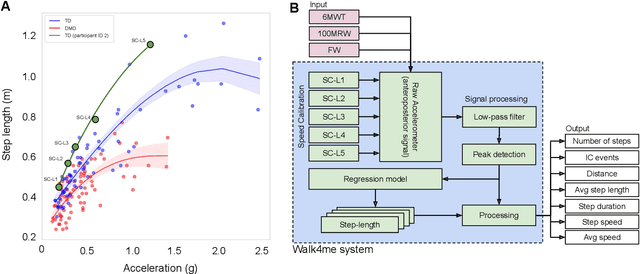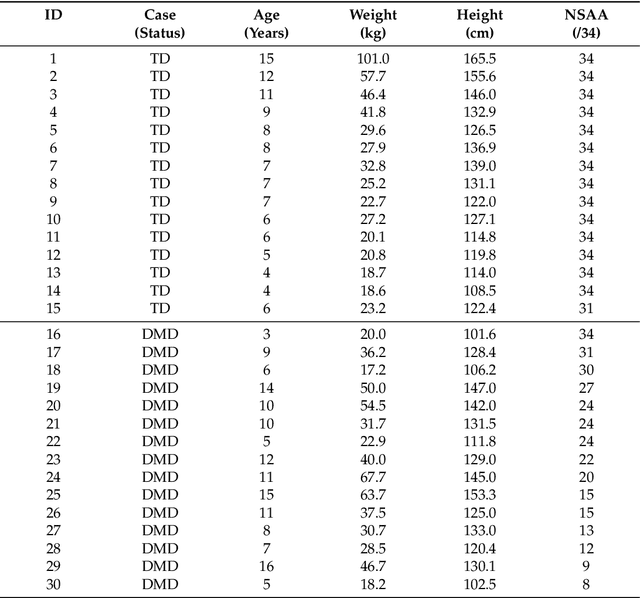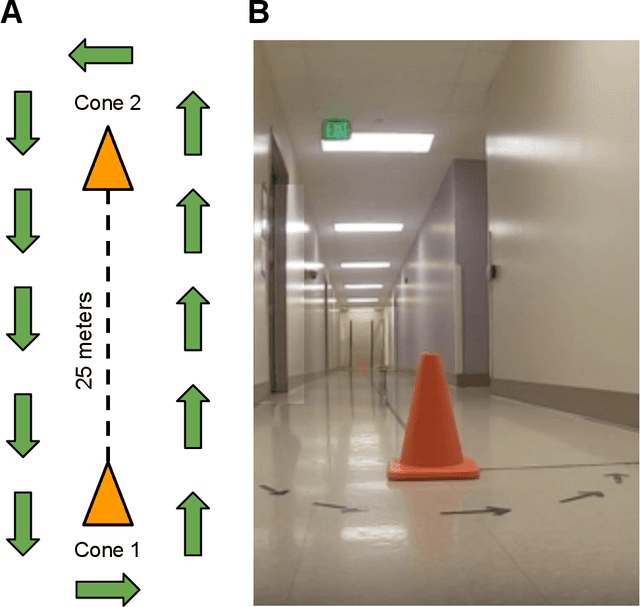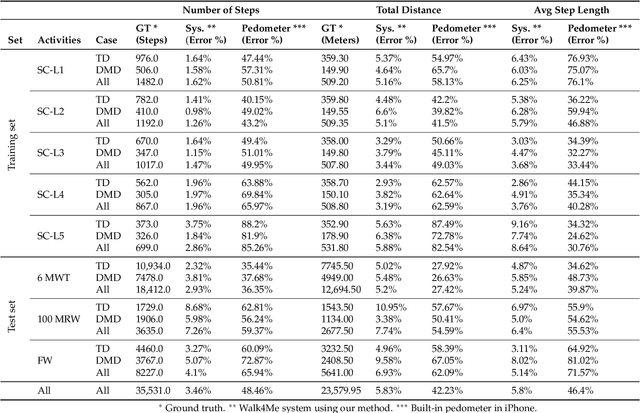Automated Detection of Gait Events and Travel Distance Using Waist-worn Accelerometers Across a Typical Range of Walking and Running Speeds
Paper and Code
Jul 10, 2023



Background: Estimation of temporospatial clinical features of gait (CFs), such as step count and length, step duration, step frequency, gait speed and distance traveled is an important component of community-based mobility evaluation using wearable accelerometers. However, challenges arising from device complexity and availability, cost and analytical methodology have limited widespread application of such tools. Research Question: Can accelerometer data from commercially-available smartphones be used to extract gait CFs across a broad range of attainable gait velocities in children with Duchenne muscular dystrophy (DMD) and typically developing controls (TDs) using machine learning (ML)-based methods Methods: Fifteen children with DMD and 15 TDs underwent supervised clinical testing across a range of gait speeds using 10 or 25m run/walk (10MRW, 25MRW), 100m run/walk (100MRW), 6-minute walk (6MWT) and free-walk (FW) evaluations while wearing a mobile phone-based accelerometer at the waist near the body's center of mass. Gait CFs were extracted from the accelerometer data using a multi-step machine learning-based process and results were compared to ground-truth observation data. Results: Model predictions vs. observed values for step counts, distance traveled, and step length showed a strong correlation (Pearson's r = -0.9929 to 0.9986, p<0.0001). The estimates demonstrated a mean (SD) percentage error of 1.49% (7.04%) for step counts, 1.18% (9.91%) for distance traveled, and 0.37% (7.52%) for step length compared to ground truth observations for the combined 6MWT, 100MRW, and FW tasks. Significance: The study findings indicate that a single accelerometer placed near the body's center of mass can accurately measure CFs across different gait speeds in both TD and DMD peers, suggesting that there is potential for accurately measuring CFs in the community with consumer-level smartphones.
 Add to Chrome
Add to Chrome Add to Firefox
Add to Firefox Add to Edge
Add to Edge